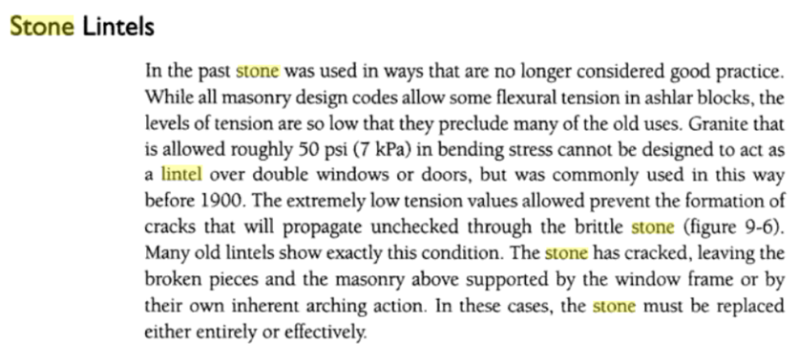Lintels
The structural design of natural-stone lintels is not included within the British or British European Standards and it is therefore impossible to provide structural design calculations to confirm the adequacy or otherwise of a natural-stone lintel for a particular situation. For this reason it is normal practice for a stone lintel to be supported by a galvanised steel, reinforced or prestressed concrete inner lintel or beam. Figures 21 and 23 illustrate some typical examples.
While the adequacy of a natural-stone lintel cannot be confirmed by calculation, such lintels have performed satisfactorily for many centuries and may still have a role in this respect. As a general rule, provided there are no defects in the stone, a stone lintel should be able to support normal wall loads up to a span of 1.5 m without the need for a supporting inner lintel. When the bonded nature of a masonry wall is considered, the actual load on a lintel up to this span is quite moderate and well within the load-bearing capabilities of natural stone.
The minimum bearing length for lintels is defined in the British Standards but will be not less than 150 mm for a lintel spanning in the plane of the supporting wall. Effective tying-in of the ends of lintels (and sills) to the surrounding masonry is essential to the overall stability of the wall by helping to stabilise the opening and preventing its distortion under load. The height of a stone lintel will normally be dictated by the requirements of the wall courses and the facade design. Nevertheless, it is recommended that the minimum height for a lintel, up to a span of 1.5 m, should be at least 200 mm. Note, because of the weight of a stone lintel, the lintel must be handled in
accordance with CDM regulations.


![[idea] [idea] [idea]](/data/assets/smilies/idea.gif)
![[r2d2] [r2d2] [r2d2]](/data/assets/smilies/r2d2.gif)